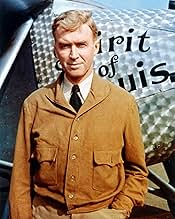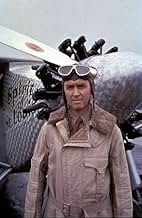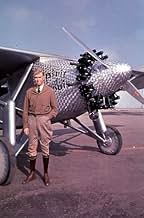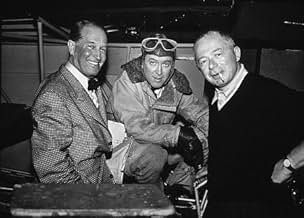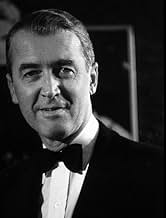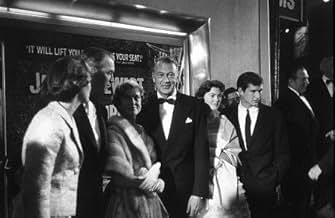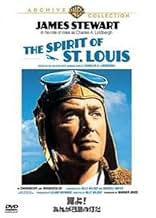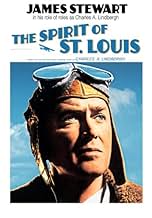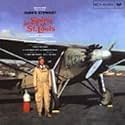Aggiungi una trama nella tua linguaCharles 'Slim' Lindbergh struggles to finance and design an airplane that will make his New York to Paris flight the first solo transatlantic crossing.Charles 'Slim' Lindbergh struggles to finance and design an airplane that will make his New York to Paris flight the first solo transatlantic crossing.Charles 'Slim' Lindbergh struggles to finance and design an airplane that will make his New York to Paris flight the first solo transatlantic crossing.
- Regia
- Sceneggiatura
- Star
- Candidato a 1 Oscar
- 2 vittorie e 1 candidatura in totale
- Burt
- (non citato nei titoli originali)
- Mother from Oklahoma
- (non citato nei titoli originali)
- Clerk
- (non citato nei titoli originali)
- Crowd Member in France
- (non citato nei titoli originali)
- Crowd Member in France
- (non citato nei titoli originali)
- Reporter
- (non citato nei titoli originali)
- Dad - Farmer
- (non citato nei titoli originali)
- Farm Boy
- (non citato nei titoli originali)
- Train Passenger
- (non citato nei titoli originali)
- Blythe
- (non citato nei titoli originali)
- Crowd Member in France
- (non citato nei titoli originali)
Recensioni in evidenza
The central problem for the film makers is the 30 hour flight, there simply wasn't enough material to depict this, the most famous episode of the whole story & the whole reason behind the legend. The use of the flashback here is entirely reasonable & to be expected as a result.
What does annoy me is the fact that he wasn't the first to fly non stop across the Atlantic. He WAS the first to fly SOLO & the first to fly non stop to Paris, but he just wasn't first to fly across the Atlantic non stop. Alcock & Brown flew across, non stop, in 1919, some 8 years before Lindnergh. Don't forget 8 years may not seem much but consider that in 8 years we went from the Mk1 Spitfire to the almost supersonic Sabre jet! Also the Vivkers Vimy bomber Alcock & Brown used was World War 1 surplus equipment, running on gasoline that had more in common with used dishwater. Yet this achievement is side stepped by Hollywood & simply ignored, yet if it was Lindbergh who'd crawled out to chip ice off the wings of his aircraft time after time we'd never have heard the end of it (a daring feat necessary because the Vimy kept accumulating too much ice to keep flying during a storm).
Useful, this film is an incomplete picture, as carefully framed in it's story line as the the impressive camera work. It does, however, continue to present a skewed view of history.
I found it interesting because I find Charles Lindberg's feat amazing and worth watching. I also enjoyed the widescreen picture. I'm surprised it's not available on DVD. The most amazing part of Lindberg's feat, from what I discovered watching the movie, was that he went 30 hours without sleep before he even took off! To stay awake for the entire trip to Paris after that was incredible.
To keep the viewers' interest, the film flashes back a number of times to Lindberg's earlier days and most of that is pretty interesting. Yes, there are some lulls in here and the movie could have been shortened from its 138 minutes but Stewart does a nice job of entertaining us, as he usually did.
I do have one question, one complaint and one suggestion. My question is, "Why is there no mention of his wife, Anne Morrow?" Odd, they totally left her out of this. She was famous in her own right.
My complaint is the emphasis - it's brought up twice in case you missed it the first time - on Lindberg not believing in prayer, only the things he could see. Pagan Hollywood just has to get their agenda in, and much of it began in the 1950s when moral restrictions began to slowly ease. This is just one more example.
They also left out what happened right after the flight, thus making the film more of a story about the voyage than of Lindberg's aviation career. Too bad, because, as many of you might know, his son's kidnapping is one of the biggest stories of that era. My suggestion then is that a full biography, with the emphasis on this flight across the Atlantic, might have been a better way to go. I think you would see that with a re-make, along with a faster- moving film.
James Stewart is once again an affable regular guy. It's what makes the character compelling. He isn't superhuman as much as a human with perseverance. He's older than the actual Lindburgh during the flight. The movie itself is a bit long at over two hours. It works fine until the plane takes off for the journey. The mirror is probably the best moment and the movie kind of coast from then on. The inner monologue is a good idea but it may be overused. The movie somewhat runs out of fuel but it has a gentle landing. It's nevertheless nice to see the plane.
Billy Wilder adapts from Charles A. Lindbergh's Pulitzer Prize winning novel of the same name, in what is a re-creation of Lindbergh's historical 1927 solo flight. Boosted by a considerably strong lead performance from James Stewart {himself a pilot} as Lindberg, and containing an intelligent screenplay from Wilder and Wendell Mayes, Spirit Of St. Louis is a sincerely well told story.
In what at times threatens to become a monotonous film, Wilder keeps it ticking over by using flashbacks to Lindbergh's life. After the nicely told build up to the event, such as the peril being realised as Nungesser and Coli go missing {never to be found} whilst attempting the same trip in reverse, we learn stuff like how he come to buy his first plane and his work with the flying circus. This is all relative to understanding the man and his obvious passion for flying. This also helps to give us a complete picture of Lindbergh, thus putting us with him in his isolated cockpit as he undertakes this dangerous journey. Battling isolation {his only company is a fly} and chronic tiredness, it's here where Stewart perfectly portrays Lindbergh's devotion to the task. Aided by a terrific score from Franz Waxman and Academy Award nominated effects by Louis Lichtenfield, Wilder's movie turns out to be an engaging human interest story that got a thoroughly professional production. 7/10
Lo sapevi?
- QuizThe movie was a box office disaster when originally released in 1957, grossing less than $3 million and costing about $7 million.
- BlooperOn his approach to St. John's, Newfoundland in the fog, Lindbergh is depicted as being concerned about colliding with a mountain peak. However, there is no even remotely mountainous terrain anywhere in the vicinity of St. John's.
- Citazioni
Charles Lindbergh: Did you wait in the rain all night?
Mirror Girl: Yes.
Charles Lindbergh: Are you from New York
[City]
Mirror Girl: No.
Charles Lindbergh: Long Island?
Mirror Girl: No. I'm from Philadelphia.
Charles Lindbergh: You came all the way from Philadelphia?
Mirror Girl: I had to. You needed my mirror.
- ConnessioniFeatured in America at the Movies (1976)
- Colonne sonoreRio Rita
(uncredited)
Music by Harry Tierney
Lyrics by Joseph McCarthy
Played on a phonograph when Lindbergh is trying to rest before the flight
I più visti
- How long is The Spirit of St. Louis?Powered by Alexa
Dettagli
- Data di uscita
- Paese di origine
- Lingua
- Celebre anche come
- The Spirit of St. Louis
- Luoghi delle riprese
- Santa Maria, California, Stati Uniti(Flight Training School)
- Aziende produttrici
- Vedi altri crediti dell’azienda su IMDbPro
Botteghino
- Budget
- 6.000.000 USD (previsto)
- Tempo di esecuzione2 ore 15 minuti
- Colore
- Mix di suoni
- Proporzioni
- 2.35 : 1
Contribuisci a questa pagina



